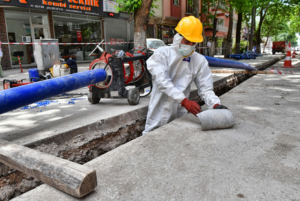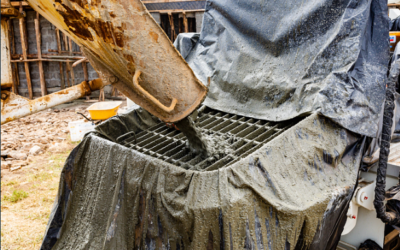Executive Summary. The measured mile is a common term used in claims by Contractors. It is the term used to describe the production rate that forms a basis of financial reimbursement. Owners would be well-suited to collect production rates during the work too.
What is a claim? In construction, Contractors often lose money due to productions in the field not meeting those they estimated. For example, a Contractor could have estimated installing 100 lineal feet (LF) of pipe in a day, but only achieved 55 LF a day on average in the field. When this production comes up short, and the Contractor deems this loss in production being due to something out of his control, a formal request for money (and/or time) is presented to the Owner. When this request is denied by the Owner, it turns into a claim.
What’s a measured mile? In the example above, the textbook claim goes like this from the Contractor:
- “I bid the job to lay 100 LF per day of pipe.”
- “I only achieved a daily average of 55 LF per day.”
- “On eight of the 42 days that we laid this pipe, we achieved an average of 104 LF per day. This is what we should have achieved every day.”
- “The reason we didn’t achieve this production rate was because _” (pick a reason, it could be a differing soil condition, traffic control issues, weather, delayed delivery of owner-furnished materials, or many other reasons.).
- “As this was out of my control in #4 above, you now owe me the money I lost in only getting 55 LF per day versus the 104 LF per day I should have achieved. If it wasn’t for this impact which was out of my control and not described in the Contract Documents, I’d have made my production.”
Not just for Contractors. The measured mile is the holy grail of cost recouping – for Contractors and for Owners. Notice I said “cost recoup”, not “claims”. Why? Because Owners need to know the work too. And Owners can recoup cost by knowing the work. Knowing the measured mile. Knowing production rates in construction. Owners need to know the work before it happens and be able to record it while it is happening. This takes a trained eye in the field which translates to a knowledge base of production rates.

The Owner needs to establish the measured mile. As Owners read this article, they may be saying “That’s not my job, let the Contractor come to me with their BS claim and this measured mile.” That’s a terrible approach. Three main reasons exist for collecting measured mile data on every job and every activity: (1) to defend against a claim, (2) to intelligently negotiate a change order, and (3) to build a production rates database to help with the first two items in this series!
Give me some examples. A Construction Manager, or an Owner who manages his own construction projects, should know the work. It’s so you don’t get taken advantage of. It’s why when you go to the mechanic you bring a friend, or call a friend, to see if the diagnosis and the price seem reasonable. In defending against a claim, it’s imperative to know what the average unimpacted production of the installation was. So, if the Contractor says “our expected and reasonable daily footage was 104 LF per day”, you can stand up and say “no it wasn’t, those were the three shallowest lays on the project, which does not make this the measured mile – it makes it your three easiest days!” In a change order situation, when you add another 500 LF of pipe to the job via change order and the Contractor says “I’m only gonna get 60 LF per day”, you can say “but on those three days of similar soil conditions and trench depth you were averaging 104 LF per day. I want to pay that price, not the slower production price.” And lastly, on the production rate database item above, well this is the easiest reason of all. How valuable would it be to have production rates for claim defense, change order negotiation, and then even budgetary estimates. There’s just nothing bad about gathering production data!
My story. I was recently assisting in a negotiation (as an Owner) and thought that a production rate in a change order was too slow. This translated to the Owner paying too much. Although there was no measured mile at hand, I relied on my experience of knowing production rates. Knowing production rates off the top of my head was helpful in quickly reducing the cost to the Owner. I love this idea of inspectors collecting data when they can, and putting it into a shared database. If you’re a large (or small) municipality and you have multiple inspectors, collect the data and put it into a database. Then conduct review sessions and create a handbook of rates. Genius!
Oh, and by the way, this is not just for pipe. This works for welding, rebar, formwork, coatings, tile, drywall, light poles, railroad track, you name it!
Work safe!






0 Comments